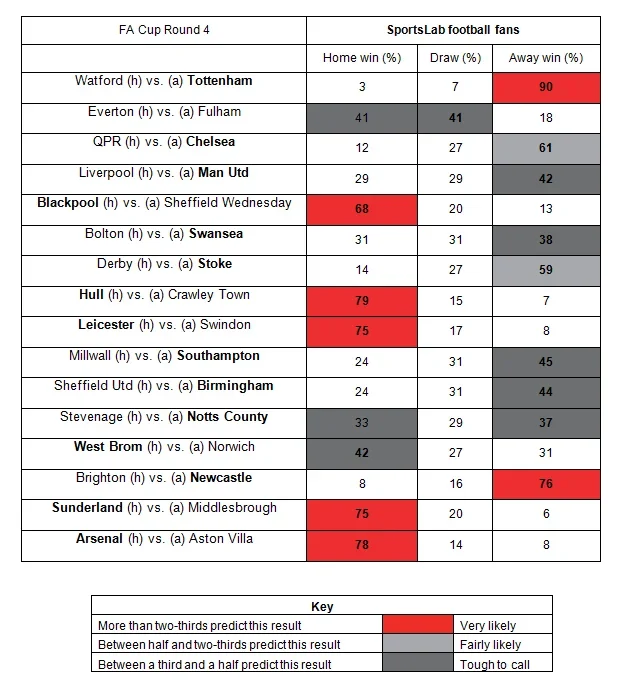The FA Cup is notorious for throwing up unexpected results – so where do SportsLab fans feel the biggest potential upsets lie in the fourth round?
Only 3% expect Watford, currently lying in 18th place in the Championship, to overcome high-flying visitors Tottenham – so it seems a victory for them would surely be the biggest shock of the weekend.
Elsewhere, Sunderland, who have been resurgent in the Premier League under Martin O’Neill, host Northeast neighbours Middlesbrough, chasing promotion in the Championship – despite only 14 places separating them in the league football ladder, only 6% of SportsLab participants predict a Middlesbrough win.
Crawley Town, one of League Two’s pace-setters, will visit Hull (who are currently occupying a play-off place in the Championship); only 7% back the Sussex side to beat their more established rivals. Victories for Brighton over Newcastle and for Swindon against Leicester would also count as major upsets – only 8% of SportsLab fans tip wins for these sides.
SportsLab participants only make one prediction which runs against the league hierarchy, narrowly tipping Notts County, who sit in 13th place in League One, to win away at Stevenage, who are sixth in the same division.
Along with six home wins and nine away wins, only one draw is predicted: between Everton and Fulham, 14th and 12th in the Premier League respectively – and even then only just (41.0% expect a draw, while 40.6% back Everton to win). 42% expect Manchester United to overcome Liverpool in the hotly-anticipated early fixture at Anfield on Saturday.

Labs Method statement
YouGovLabs research is anecdotal, with polls being open to all panellists who wish to take part. In contrast to YouGov’s Public Opinion polling, YouGovLabs seeks to understand the attitudes of specific subsets of people: sports fans tell us how they feel about sports and music fans tell us how they feel about music, for example. YouGovLabs results are unweighted, and figures reported do not reflect the attitudes of the population as a whole.
Percentages are quoted to the nearest whole number – this means that in some cases, the total in the tables presented.









